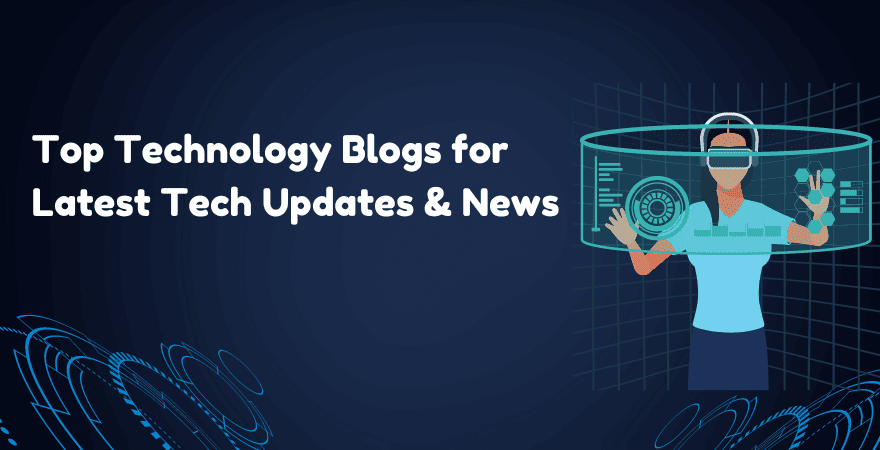Uncover Hidden Treasures in the Industry with the Best tech blog Recommendations
Uncover Hidden Treasures in the Industry with the Best tech blog Recommendations
Blog Article
Understanding the Rise of Side Computer in Today's Digital World
In the rapidly evolving landscape of modern technology, side computing arises as a critical pressure, reshaping just how data is refined and utilized. This paradigm shift is driven by the proliferation of IoT gadgets and a rising demand for instant data handling. By transitioning data management closer to the resource, side computer addresses essential latency problems while enhancing bandwidth use and boosting safety steps. As industries pivot in the direction of smarter, extra reliable systems, comprehending the subtleties and ramifications of this technical development comes to be necessary. What does this mean for future technologies and the electronic environment as a whole?
What Is Edge Computing
Side computer, although a reasonably recent advancement in the realm of modern technology, basically transforms exactly how data is processed and managed by bringing computation and information storage closer to the place where it is needed. Unlike traditional cloud computing versions, which usually depend on centralized information facilities that can be geographically remote, side computer decentralizes information handling. This proximity decreases latency, enhances real-time information handling, and enhances the overall customer experience by ensuring faster feedback times.
At its core, side computing involves a network of localized gadgets and infrastructure, such as routers, gateways, and sensors, efficient in refining information at or near the resource. This local handling ability is specifically vital for applications requiring instant information analysis, such as independent lorries, industrial automation, and clever cities. Furthermore, by unloading data processing jobs from central servers, side computer reduces bandwidth needs and improves information personal privacy and protection, as delicate information can stay on-site instead of going across extensive networks.

Secret Chauffeurs of Adoption
Numerous factors are propelling the adoption of side computing in today's electronic landscape. Edge calculating addresses this need by enabling information processing closer to the information resource, minimizing latency and boosting real-time decision-making capabilities.
One more considerable vehicle driver is the need for improved data transfer effectiveness. Central cloud systems can come to be overloaded with the sheer quantity of information created by IoT tools, resulting in bottlenecks (Best tech blog). By processing information at the edge, companies can alleviate network congestion and improve overall system performance
Furthermore, protection and privacy concerns are pushing companies toward side computer. By processing delicate information in your area, companies can alleviate threats linked with information transmission and exposure to potential cyber hazards.
The increase of applications calling for real-time handling, such as autonomous cars and boosted fact, additionally requires the rapid feedback times that edge calculating offers. Jointly, these drivers are making side computing an indispensable part of modern-day IT infrastructure, leading the means for its prevalent fostering across different markets.
Benefits Over Cloud Computer
Just how does side computer identify itself from traditional cloud computing? Mostly, side computing brings data processing closer to the resource of information generation, typically on regional gadgets or close-by web servers, instead than relying on central data.
Furthermore, side computing boosts transmission capacity performance (Best tech blog). By processing data locally, just the necessary data is transferred to the cloud for further evaluation or storage, minimizing the quantity of data that traverses the network. This not just relieves network congestion yet additionally decreases information transmission prices
Edge computing also uses improved information personal privacy and safety. Delicate information can be processed locally without being sent to the cloud, lessening the exposure to prospective cyber threats. This is especially valuable for fields taking care of confidential details, such as healthcare and monetary services.
Additionally, edge computing guarantees higher strength and dependability. Local processing permits continued operation also when connection to the cloud is compromised, maintaining essential functions and solutions in click for source spite of potential network interruptions. These advantages jointly show edge computing's transformative possibility in optimizing performance and safety and security in digital environments.
Obstacles and Considerations
While side computing supplies various benefits, it also provides one-of-a-kind challenges and considerations that need to be resolved to fully understand its possibility. Furthermore, managing and keeping an eye on a decentralized network of side gadgets can be complex, needing innovative tools and techniques to guarantee smooth operation and maintenance. Best tech blog.
One more consideration is the scalability of side computer solutions. As the number of connected tools grows, so does the need for refining power at the side, which can sites bring about resource restraints. Organizations has to thoroughly plan their facilities to fit this growth without compromising efficiency or efficiency.
Interoperability is another important variable. With numerous software and hardware components entailed, making sure compatibility and seamless integration can be challenging. Standardization initiatives are important to help with communication in between inconsonant systems.
Future Patterns in Side Computing
Preparing for the future, edge computer is positioned to reinvent numerous industries by making it possible for faster information processing and decreasing latency. As the quantity of data generated by IoT tools continues to grow, side computer will end up being increasingly vital in managing this increase successfully.
One more arising fad is the advancement of edge-native applications made specifically to take advantage of the one-of-a-kind capacities of edge computing. These applications will certainly maximize performance and source usage, resulting in boosted efficiency throughout different markets. Improvements in 5G modern technology will certainly additionally bolster edge computer by giving the essential framework for high-speed, low-latency communication in between tools and side nodes.
Verdict
Side computer's surge is driven by the spreading of IoT gadgets and the need for real-time information handling, which boosts effectiveness by lowering latency and decentralizing data monitoring. This strategy minimizes data transfer inadequacies and safety and security issues, facilitating advancements in applications like wise cities and self-governing vehicles. Regardless of challenges such as infrastructure intricacy and integration, the future of edge computing assures a much more responsive electronic environment, with continued innovations forming its development and expanding its applicability throughout industries.
Side computing, although a relatively current improvement in the realm of modern technology, essentially transforms how data is processed and taken care of by bringing calculation and data storage space closer to the location where it is required. Unlike conventional cloud computer designs, which frequently rely on central data facilities that can be geographically distant, side computing decentralizes information handling. Additionally, by unloading data processing jobs from main web servers, edge computing minimizes transmission capacity requirements and enhances information personal privacy and safety, as delicate details can remain on-site rather than passing through substantial networks.

Report this page